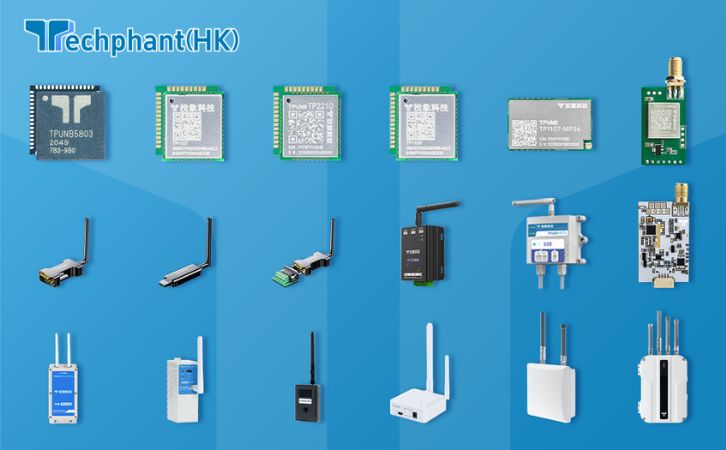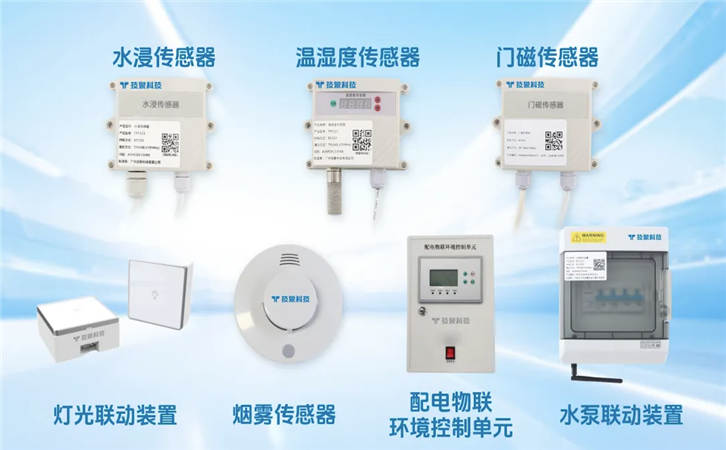I. Introduction to Sub-GHz Technology
Sub-GHz technology refers to wireless communication systems operating on radio frequencies below 1 GHz, typically between 300 MHz and 960 MHz. These frequencies have become a cornerstone of the Internet of Things (IoT) due to their ability to enable long-range, low-power communication, making them ideal for applications where devices need to operate over extended distances or with minimal energy consumption. Unlike higher-frequency bands like 2.4 GHz, commonly used by Wi-Fi and Bluetooth, sub-GHz signals offer superior penetration through obstacles such as walls, buildings, and foliage, allowing reliable connectivity in challenging environments like rural areas or industrial facilities.
The significance of sub-GHz technology lies in its ability to address key IoT requirements: extended battery life, cost-effective deployment, and robust communication over large areas. Sub-GHz devices are particularly suited for transmitting small data packets, such as sensor readings or status updates, rather than high-bandwidth content like video. Common frequency bands include 433 MHz, 868 MHz (Europe), and 915 MHz (North America), with regional variations governed by local regulations. Compared to higher-frequency alternatives, sub-GHz systems experience less interference due to lower congestion in these bands, enhancing reliability. This section explores the principles of sub-GHz communication, its advantages, and its critical role in enabling scalable IoT ecosystems for applications like smart grids, environmental monitoring, and asset tracking.
II. Key Sub-GHz Protocols and Their Applications
Sub-GHz communication relies on specialized protocols designed to optimize performance in low-power, long-range scenarios. This section examines four prominent sub-GHz protocols—LoRaWAN, Zigbee, Z-Wave, and Sigfox—detailing their architectures, strengths, and specific applications in IoT ecosystems.
- LoRaWAN (Long Range Wide Area Network): LoRaWAN is a low-power, wide-area network (LPWAN) protocol that uses chirp spread spectrum modulation for long-range communication, often exceeding 10 km in rural areas. It operates in a star-of-stars topology, with end devices communicating to gateways that forward data to a network server. LoRaWAN’s low power consumption and support for massive device deployments make it ideal for smart cities (e.g., street lighting), agriculture (e.g., soil monitoring), and logistics (e.g., asset tracking). Its adaptive data rate optimizes battery life and network capacity, though it is limited to small payloads and low data rates.
- Zigbee: Zigbee is a mesh networking protocol operating in sub-GHz bands (e.g., 915 MHz in the U.S.) and 2.4 GHz globally. It supports short-to-medium-range communication, typically up to 100 meters per hop, with the ability to extend range through mesh routing. Zigbee’s low power consumption and support for up to 65,000 devices per network make it suitable for home automation (e.g., smart thermostats) and industrial IoT (e.g., equipment monitoring). However, its reliance on line-of-sight for optimal performance can be a limitation in complex environments.
- Z-Wave: Z-Wave is a proprietary sub-GHz protocol designed for home automation, operating in the 908 MHz band in the U.S. and 868 MHz in Europe. It uses a mesh network topology, supporting up to 232 devices, and offers reliable communication over distances of about 100 meters. Z-Wave’s simplicity and low power requirements make it popular for smart locks, lighting, and HVAC systems. Its closed ecosystem ensures interoperability but limits flexibility compared to open standards like Zigbee.
- Sigfox: Sigfox is an ultra-narrowband LPWAN protocol designed for minimal data transmission, such as sensor readings, over distances up to 50 km in open areas. It uses a star topology, with devices sending messages to base stations connected to the Sigfox cloud. Sigfox’s extreme energy efficiency allows devices to operate for years on small batteries, making it ideal for environmental monitoring and smart metering. However, its low data rate and unidirectional communication limit its use in applications requiring frequent or bidirectional data exchange.
Each protocol serves distinct IoT needs, with selection depending on factors like range, data rate, and deployment scale.
III. Sub-GHz Devices and Hardware Solutions
Sub-GHz devices encompass a range of hardware, including chipsets, modules, and sensors, designed to enable wireless communication in IoT applications. This section reviews key sub-GHz hardware solutions, focusing on their specifications, integration capabilities, and role in IoT ecosystems.
- Chipsets: Sub-GHz chipsets are the core components of IoT devices, providing the radio frequency (RF) capabilities needed for communication. The Semtech SX1276 is a popular LoRa-compatible chipset, offering long-range connectivity (up to 15 km) and low power consumption, ideal for LPWAN applications. The Texas Instruments CC1310 supports multiple sub-GHz protocols, including proprietary stacks, with a low-power ARM Cortex-M3 processor for smart metering and industrial IoT. The Nordic nRF905 provides reliable sub-GHz communication for short-to-medium-range applications, such as remote controls, with robust error correction.
- Modules: Sub-GHz modules integrate chipsets with antennas and firmware, simplifying development. The Murata CMWX1ZZABZ is a LoRaWAN module combining the SX1276 chipset with a microcontroller, widely used in smart agriculture and asset tracking. The Digi XBee SX supports Zigbee and proprietary sub-GHz protocols, offering flexibility for industrial automation. These modules reduce design complexity, enabling faster deployment in IoT systems.
- Sensors and End Devices: Sub-GHz sensors, such as temperature, humidity, or motion detectors, are often paired with chipsets or modules to transmit data. For example, Libelium Waspmote devices integrate sub-GHz radios (e.g., LoRa, Zigbee) for environmental monitoring, while Echelon’s Lumewave smart streetlights use sub-GHz communication for urban IoT. These devices are optimized for low power, often operating for years on a single battery.
Sub-GHz hardware solutions are designed for easy integration with IoT platforms, supporting protocols like LoRaWAN and Zigbee while meeting stringent power and range requirements. Their versatility enables applications across smart homes, industrial systems, and large-scale infrastructure projects.
IV. Challenges and Future Directions for Sub-GHz Technology
While sub-GHz technology offers significant advantages for IoT, it faces several challenges that impact its adoption and performance. This section discusses these challenges and explores future directions for sub-GHz devices and protocols.
- Regulatory Constraints: Sub-GHz frequency bands are subject to regional regulations, such as 868 MHz in Europe and 915 MHz in North America, requiring manufacturers to customize devices for different markets. Duty cycle restrictions, which limit transmission time to reduce interference, can also constrain performance in high-traffic applications.
- Interoperability Issues: The diversity of sub-GHz protocols and proprietary solutions can lead to compatibility challenges, particularly in heterogeneous IoT deployments. Efforts like the LoRa Alliance and Zigbee Alliance promote standardization, but achieving seamless integration across vendors remains a hurdle.
- Limited Data Rates: Sub-GHz systems are optimized for small data packets, with data rates typically below 50 kbps, making them unsuitable for high-bandwidth applications. This limitation necessitates careful application design to balance range, power, and data needs.
- Future Directions: Advancements in sub-GHz technology are addressing these challenges. Hybrid protocols combining sub-GHz with higher-frequency bands (e.g., 2.4 GHz) are emerging to support diverse use cases, such as low-power sensor networks paired with high-speed gateways. Integration with 5G networks promises to enhance sub-GHz IoT by providing backhaul connectivity for large-scale deployments like smart cities. Enhanced security features, such as end-to-end encryption and secure firmware updates, are also being developed to protect sub-GHz devices from cyber threats. Additionally, innovations in energy harvesting, such as solar-powered sub-GHz sensors, aim to further extend device lifespans.
By overcoming these challenges and leveraging emerging trends, sub-GHz technology will continue to play a pivotal role in the expansion of IoT, enabling efficient and scalable solutions for a connected world.
V. Conclusion
Sub-GHz devices and protocols are fundamental to the growth of IoT, offering unparalleled advantages in long-range, low-power communication for applications ranging from smart cities to industrial automation. Protocols like LoRaWAN, Zigbee, Z-Wave, and Sigfox, paired with advanced hardware solutions such as chipsets and modules, enable reliable and scalable IoT deployments tailored to diverse needs. Despite challenges like regulatory constraints, interoperability, and limited data rates, ongoing innovations in hybrid protocols, 5G integration, and enhanced security are paving the way for more robust sub-GHz systems. As the demand for connected solutions continues to rise, sub-GHz technology will remain a critical enabler, driving the development of efficient, sustainable, and future-ready IoT ecosystems that transform industries and improve lives globally.


